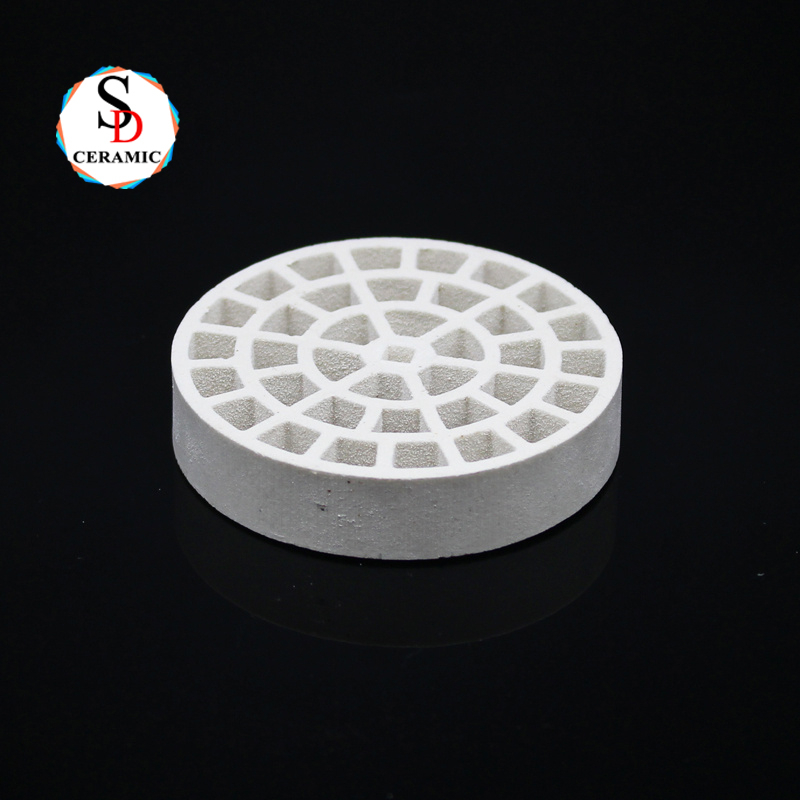Mullite ceramic (3Al₂O₃·2SiO₂) is a high-performance engineering ceramic known for its excellent thermal stability, low thermal expansion, and outstanding thermal shock resistance. This material is widely used in the fields of high-temperature industry, electronic packaging, and refractory materials.
About Mullite Ceramic
Mullite ceramics are composed of alumina (Al₂O3) and silica (SiO₂), with a unique needle like crystal structure that endows them with high mechanical strength, low thermal conductivity, and excellent creep resistance.
According to the composition ratio, mullite ceramics can be divided into:
Standard mullite (72% Al₂O₃): used in high-temperature environments such as refractory bricks and kiln furniture.
High alumina mullite (≥ 75%Al₂O₃): suitable for industrial furnace linings and electronic substrates at higher temperatures.
Characteristics of Mullite Ceramics
physical property
Color: White or off white (the higher the purity, the whiter)
Density: 2.7-3.2 g/cm ³ (lower than alumina, lighter weight)
Thermal expansion coefficient (25-1000°C): 4.5-5.5 × 10⁻⁶/K (much lower than alumina, excellent thermal shock resistance)
Mechanical properties
Bending strength: 120-200 MPa
Hardness: 6-7 Mohs
Elastic modulus: 150-220 GPa
Thermal Properties
Maximum operating temperature: 1650°C (long-term stable)
Thermal conductivity: 3-5 W/(m·K) (low thermal conductivity, suitable for insulation applications)
Electrical Property
Volume resistivity (20°C):>10¹⁴Ω· cm (excellent insulator)
Dielectric constant (1MHz): 6-7
|
|
Advantages of Mullite Ceramics
✔ Super strong thermal shock resistance - able to withstand rapid cooling and heating (Δ T>800°C)
✔ High temperature stability - no phase transition, no deformation at 1600 ° C
✔ Low thermal expansion - matching metal/alloy to reduce thermal stress cracking
✔ Chemical corrosion resistance - resistance to molten metal/slag erosion
✔ Lightweight -15-20% lighter than alumina
Typical Applications of Mullite Ceramics
Refractory materials: kiln lining bricks, sintering trays, thermocouple protection tubes
Electronics industry: IC packaging substrates, high-frequency insulation components
Energy and environmental protection: thermal barrier coatings for gas turbines, catalytic converter carriers
Glass Manufacturing: Glass Furnace Flow Hole Lining Plate
Aerospace: Rocket nozzle insulation layer
conclusion
Mullite ceramics are the preferred material for high-temperature, thermal insulation, and thermal shock resistant environments, especially suitable for fields that require synergistic optimization of lightweight and thermal stability. Mullite provides an irreplaceable solution for extreme thermal cycling conditions that alumina ceramics cannot meet, such as glass kilns and aerospace components.
If you need to customize mullite ceramic components (such as shaped refractory parts, insulation sleeves), please feel free to provide technical parameter acquisition solutions!

If you have any questions or need help, feel free to contact with our team.
Phone
+86 183 5248 9056
Location
Qianluo Village, Dingshu Town, Yixing City, Jiangsu Province, China
Welcome to subscribe to our email message!


Copyright © Yixing Shengda Refractory Ceramic Co., Ltd. All Rights Reserved | Sitemap | Powered By 